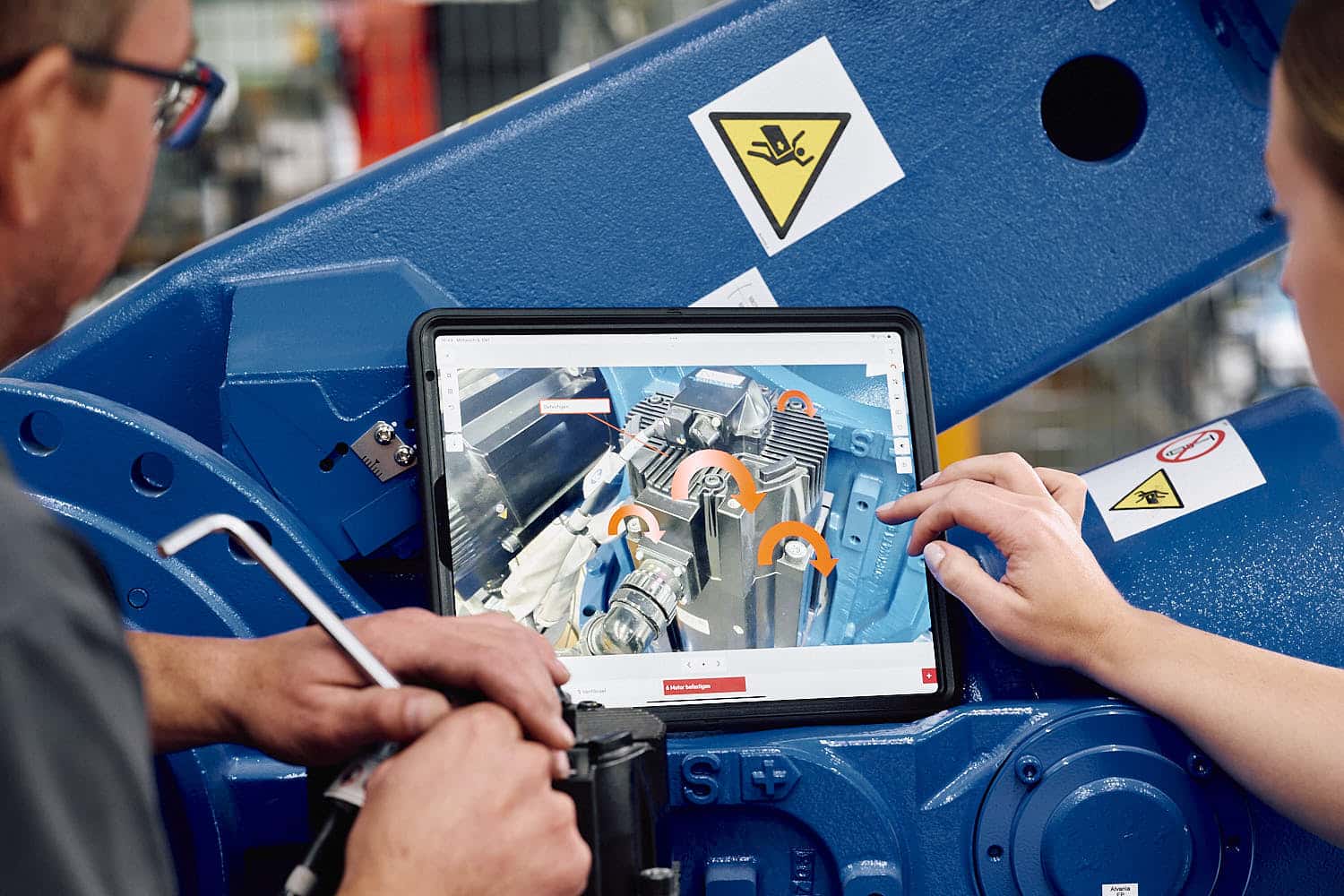The documentation of work instructions and manuals in production is crucial for consistent product quality and efficient processes. At the same time, it presents companies with the challenge of providing information that is up-to-date, comprehensible and accessible to all employees.

No or incomprehensible instructions are created.

The employees write instructions and thus secure the knowledge in the company.
The shortage of skilled workers in manufacturing poses major challenges for companies: Fewer and fewer qualified workers are available for increasingly complex production processes. This development not only jeopardizes efficiency, but also the innovative strength of the entire industry.

Employees go on vacation, fall ill or retire.

Knowledge is lost. Problems have to be laboriously solved again and errors occur.

With the instructions from the instructor, even semi-skilled employees can take on complex tasks with confidence.

The knowledge remains in the company – and you remain capable of acting in any situation.
Digital instructions guide employees step by step through inspection processes. They ensure standardized processes and significantly reduce inspection errors. This ensures product quality and increases efficiency in quality assurance.

There are no inspection instructions and the employees inspect individually at their own discretion.

This increases the risk of errors and leads to quality deviations and reworking in the field.

The inspection instructions in the instructor guide employees safely and consistently through inspection processes.

Product quality is assured and quality assurance efficiency is increased.
Training new employees is often time-consuming and error-prone. A lack of knowledge and uncertainty slow down the onboarding process. Well-structured instructions create clarity, standardize processes and thus make it noticeably easier to get started.

The induction and training of employees is time-consuming and resource-intensive.

Training is reduced to the bare essentials and the teacher’s capacity is lacking in operational business.

With the instructor, employees can familiarize themselves with processes independently and access the training content in the field.

Employees receive standardized training, resources are conserved and business operations are not interrupted.
The documentation of variants in assembly poses a number of problems. Many work steps are repeated, while others differ between the variants.

All variants are summarized in a guide at
.
Individual instructions are created for each variant.

The instructions become confusing, which leads to quality problems and errors
Individual instructions lead to redundant content and increase the administrative effort many times over.

All variants are managed in a manual and the work steps are assigned to the variants.
Only the relevant work steps are displayed when the instructions are carried out.

The complexity of variant production is reduced and employees are guided through processes efficiently and error-free.
The administrative effort is reduced to a minimum.

Finding and accessing the required instructions is time-consuming.

Employees prefer to call their colleague and ask for advice, interrupting them in their work.

With the instructor, the employee can call up the right instructions in the right version in seconds using a QR or barcode.

It is more convenient for the employee to call up the instructions digitally than to disturb a colleague. This saves time, money and nerves.
Verbal work instructions are often not fully remembered or interpreted differently. Important steps can be forgotten – especially with new or changing employees. This leads to errors, queries and unnecessary additional work.

Without instructions, the processes must be explained verbally to each employee.

Verbal instructions are not sustainable, steps are forgotten, errors occur and additional work is required

QR code links at the workstation give employees direct access to instructions.

Process reliability is guaranteed across all employees and locations and the work results are recorded.
If there are no clear inspection instructions for incoming goods, the inspection is heavily dependent on the individual employee. Everyone checks at their own discretion – sometimes too superficially, sometimes too elaborately. This leads to inconsistent results and increases the risk of faulty or incomplete goods being overlooked. The consequences can be seen later in production: unplanned downtime, rework and high follow-up costs.

Without inspection instructions in the incoming goods department, goods are often checked unsystematically and are prone to errors.

Defective parts enter production, causing downtime that also affects downstream departments

With Instructor, employees receive digital inspection instructions and can document and report deviations directly.

Quality is assured, processes are standardized and expensive reworking and downtimes are significantly reduced
The packaging of transport-critical goods requires special care and clear guidelines. A lack of knowledge or inconsistent processes can quickly lead to transport damage. Without standardized instructions, the risk of complaints and loss of time increases – and in the event of damage, the company is also obliged to provide evidence.

If employees do not know how to pack transport-critical goods correctly and no instructions are available.

If goods are not packaged correctly, they arrive damaged and cause complaints and additional costs.

With the instructor, employees receive clear packaging instructions and document how the goods have left the company using checklists and photos.

Securely packaged goods ensure satisfied recipients, fewer complaints and protect the sender from liability risks.
Stay up to date, learn first-hand about the most innovative digitalization trends and all the latest news about tepcon, the “trainer” for digital instructions, and receive exclusive invitations to our lectures and events.
A work of the Seiten-Werk
You are currently viewing a placeholder content from Default. To access the actual content, click the button below. Please note that doing so will share data with third-party providers.

You are currently viewing a placeholder content from HubSpot. To access the actual content, click the button below. Please note that doing so will share data with third-party providers.
More InformationYou are currently viewing a placeholder content from HubSpot. To access the actual content, click the button below. Please note that doing so will share data with third-party providers.
More InformationYou are currently viewing a placeholder content from HubSpot. To access the actual content, click the button below. Please note that doing so will share data with third-party providers.
More Information
You are currently viewing a placeholder content from HubSpot. To access the actual content, click the button below. Please note that doing so will share data with third-party providers.
More InformationYou are currently viewing a placeholder content from Default. To access the actual content, click the button below. Please note that doing so will share data with third-party providers.